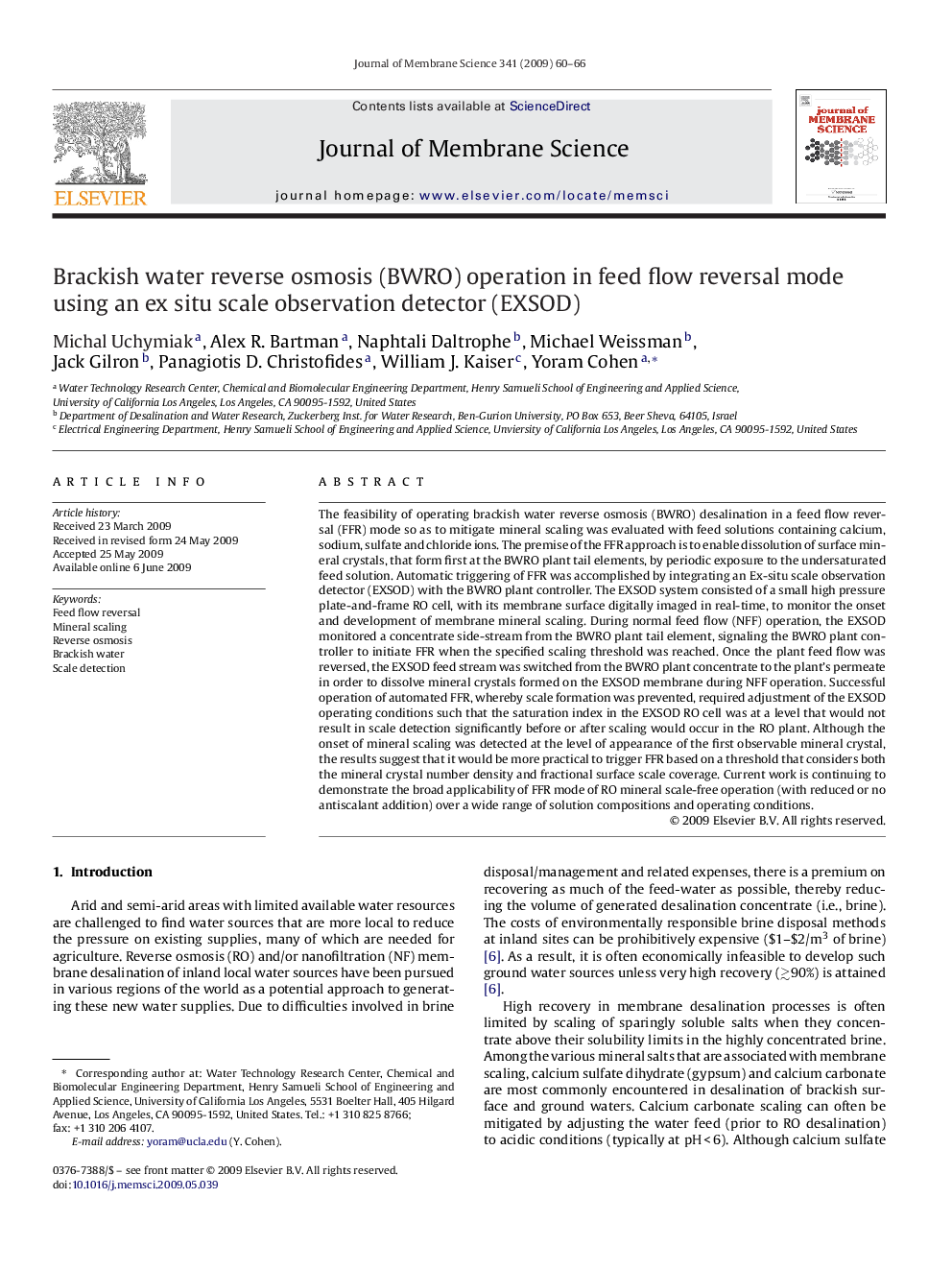| Article ID | Journal | Published Year | Pages | File Type |
|---|---|---|---|---|
| 636837 | Journal of Membrane Science | 2009 | 7 Pages |
The feasibility of operating brackish water reverse osmosis (BWRO) desalination in a feed flow reversal (FFR) mode so as to mitigate mineral scaling was evaluated with feed solutions containing calcium, sodium, sulfate and chloride ions. The premise of the FFR approach is to enable dissolution of surface mineral crystals, that form first at the BWRO plant tail elements, by periodic exposure to the undersaturated feed solution. Automatic triggering of FFR was accomplished by integrating an Ex-situ scale observation detector (EXSOD) with the BWRO plant controller. The EXSOD system consisted of a small high pressure plate-and-frame RO cell, with its membrane surface digitally imaged in real-time, to monitor the onset and development of membrane mineral scaling. During normal feed flow (NFF) operation, the EXSOD monitored a concentrate side-stream from the BWRO plant tail element, signaling the BWRO plant controller to initiate FFR when the specified scaling threshold was reached. Once the plant feed flow was reversed, the EXSOD feed stream was switched from the BWRO plant concentrate to the plant's permeate in order to dissolve mineral crystals formed on the EXSOD membrane during NFF operation. Successful operation of automated FFR, whereby scale formation was prevented, required adjustment of the EXSOD operating conditions such that the saturation index in the EXSOD RO cell was at a level that would not result in scale detection significantly before or after scaling would occur in the RO plant. Although the onset of mineral scaling was detected at the level of appearance of the first observable mineral crystal, the results suggest that it would be more practical to trigger FFR based on a threshold that considers both the mineral crystal number density and fractional surface scale coverage. Current work is continuing to demonstrate the broad applicability of FFR mode of RO mineral scale-free operation (with reduced or no antiscalant addition) over a wide range of solution compositions and operating conditions.
